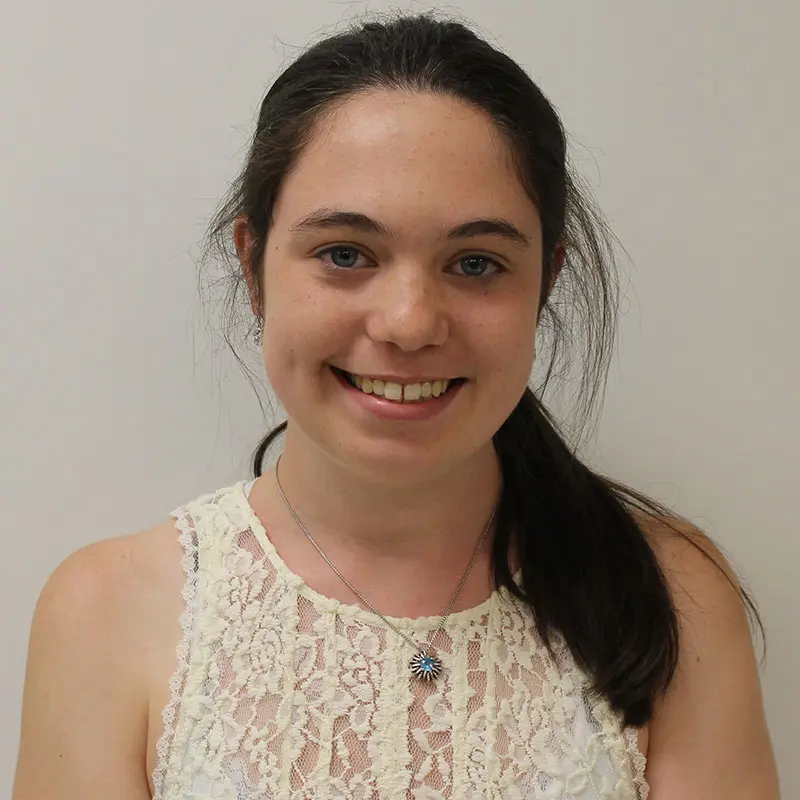Graduate Student Catherine Barry Researches Parachute Suspension Lines for the Army and NASA

Catherine Barry
11/03/2021
By Edwin L. Aguirre
“Both of my parents have advanced degrees in life sciences, so science and engineering were always a topic of conversations at the dinner table,” says the mechanical engineering Ph.D. student from Marlborough, Massachusetts.
When she was a junior in high school, Barry was awarded the Rensselaer Medal by the Rensselaer Polytechnic Institute, which recognizes students who have distinguished themselves in math and science.
“The award came with a scholarship to Rensselaer, so I decided to major in chemical engineering,” she says.
At Rensselaer, Barry had an opportunity to participate in undergraduate research, which gave her an insight into the skills that industry looks for in prospective employees.
“This experience got me very interested in conducting applied research,” she recalls. “It ultimately led me to want to pursue a Ph.D. to expand my options for job opportunities.”
During the summer before her senior year at Rensselaer, Barry took a couple of basic mechanical engineering courses at UMass Lowell and found that she really enjoyed them.
“This made me realize that I actually wanted to be a mechanical engineer,” she says.
After obtaining her bachelor’s degree from Rensselaer, Barry immediately enrolled in UML’s doctorate program.
“My time here at UMass Lowell has definitely reinforced that I made the right decision,” she says.
From the Battlefield to Outer Space
Barry currently works with Engineering Dean and Prof. James Sherwood and Assoc. Prof. David Willis in the university’s Advanced Composite Materials and Textile Research Laboratory. Her research involves characterizing and modeling parachute suspension lines.
“The Army uses parachutes to deliver supplies and equipment to personnel in the field. Accurate targeting is critical,” she says. “My research will help increase the reliability of the package getting delivered to the right address. Parachutes are also important to NASA for space capsule reentry to Earth and for targeted landing of rovers on Mars.”
According to Barry, the two major components of the parachute are the maneuverable canopy and the suspension lines, which consist of braided cords.
“With parachutes, most people think of the importance of the fabric canopy opening properly. However, it is the tugging of the suspension lines between the payload or the paratrooper and the canopy that initiates that opening. Those lines are no less critical than the canopy,” Barry notes.
“My goal is to understand the contribution of the suspension lines to the parachute’s ability to hit the target better than has ever been done before,” she says.
To accomplish this, Barry is developing a computer model to simulate how the lines behave during the parachute’s deployment and descent.
“As the parachute descends, air moving over the lines will cause the lines to bend and twist in repeated motions. These vibrations can adversely affect the ability to steer the parachute,” she says.
Through testing, Barry found that the effective bending and twisting stiffness increases with increasing tension, or pull, on the line.
“Just as the frequency of a guitar string goes up with increasing tension, the frequency of the sound of the vibrating suspension line changes as the tension on the line changes,” she explains. “My research focuses on how variations in the braid design can change the bending and twisting properties of the suspension line, and how to develop ways to mitigate the vibrations.”
Barry says researchers at NASA’s Jet Propulsion Laboratory (JPL) in Pasadena, California, became aware of her work during a conference and invited the team to partner with them.
“Our fluid-structure interaction models of the suspension lines are much more sophisticated than what is currently being used at JPL. Thus, our improved models will help minimize the need for the design-build-test approach for NASA parachutes and assist in developing lightweight, reliable parachutes. If we can reduce the weight of the parachute system, the cost of space travel can likewise be reduced,” she says.
Barry says aside from parachutes, braided cords are used in a wide variety of applications, including towing, tie-down strapping, mooring, rigging and mountain climbing.
“The design of these classes of braided cords is currently more of an art than a science,” she says. “My research can potentially be applied to the design of these cords and help analyze their performance under a variety of working conditions.”
After she graduates, Barry hopes to land a job in industry or the Department of Defense.
“In my time at UMass Lowell, I have really enjoyed participating in real-world research projects to solve important challenges today,” she says. “I would love nothing more than the chance to apply what I have learned at UML to contribute to solving problems that people, industries or our government may be facing. Researching and providing solutions to make the quality of life better is what I love to do.”
